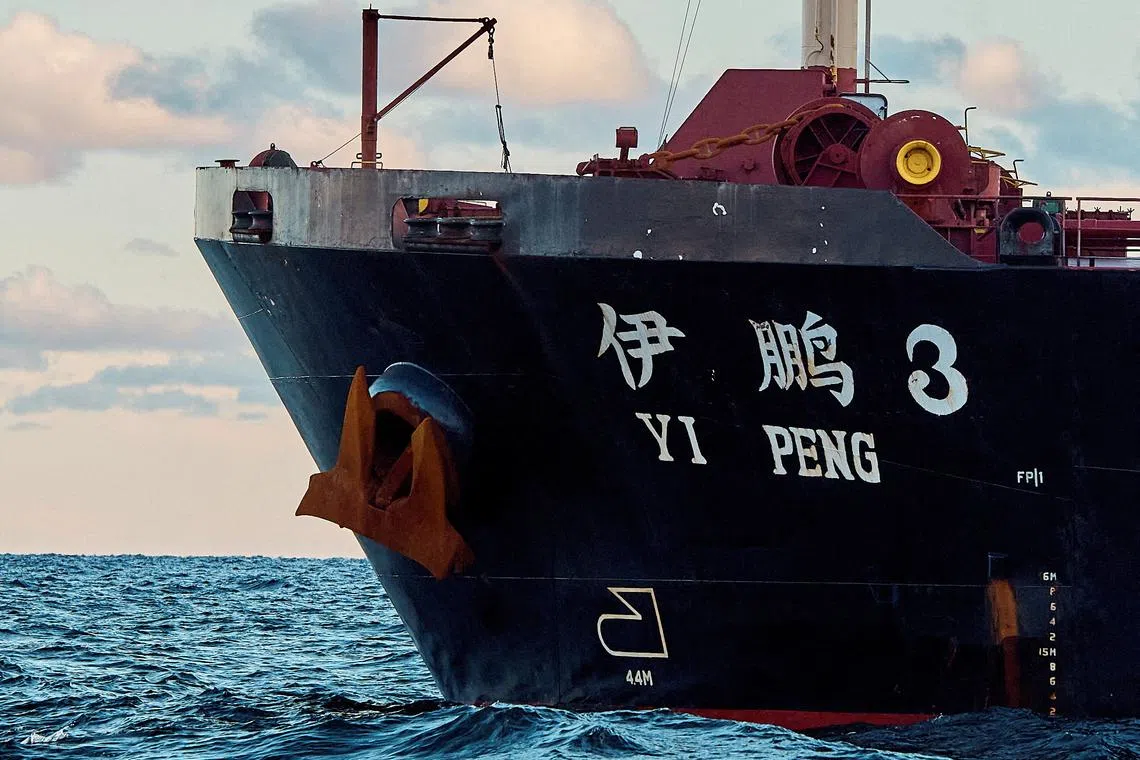Swedish probe finds no conclusive evidence of deliberate cable damage by Chinese ship
Sign up now: Get ST's newsletters delivered to your inbox

The Yi Peng 3 bulk carrier has been under investigation for dragging its anchor and breaching two subsea fibre-optic communications cables.
PHOTO: REUTERS
Follow topic:
COPENHAGEN – A Swedish probe found no conclusive evidence to suggest that a Chinese ship had deliberately dragged its anchor to damage two Baltic Sea cables, Sweden’s Accident Investigation Authority said on April 15, though a separate investigation remains under way.
The Yi Peng 3 bulk carrier has been under investigation for dragging its anchor and breaching two subsea fibre-optic communications cables in Swedish economic waters in 2024, one linking Finland and Germany and the other connecting Sweden to Lithuania, on Nov 17 and 18.
“It cannot be determined with certainty whether a Chinese ship intentionally damaged data cables in the Baltic Sea,” said the government authority, which investigates accidents and incidents, in a statement.
Swedish prosecutor Henrik Soderman told Reuters that he was still investigating the case in a separate probe, declining to provide further detail.
Investigators faced some constraints as the Chinese authorities maintained jurisdiction over the vessel, prohibiting criminal investigations and recording of interviews aboard, it said.
China in December 2024 said it had provided information and documents for the investigation into the severing of the cables, while its ally Russia has so far denied involvement in any of the Baltic infrastructure incidents.
The Baltic Sea region is on high alert after a string of power cable, telecommunications link and gas pipeline outages

